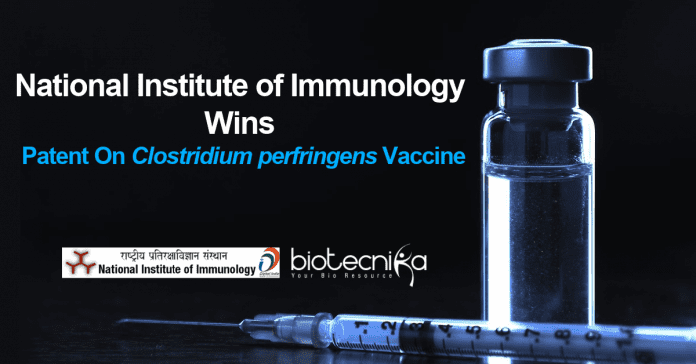National Institute of Immunology wins patent on a vaccine against ε-toxin of Clostridium perfringens
DNA vaccines can theoretically result in long term manufacturing of an antigenic protein when presented into a relatively non-dividing tissue, such as muscular tissue. On top of that, the DNA vaccine is relatively inexpensive as well as simple to manufacture than traditional vaccines. With the high copy origin of duplication, the great yield of plasmid DNA can be purified from bacteria and suspended in a saline solution prepared for delivery which might enable prompt immunization against arising transmittable diseases.
Various other benefits of DNA vaccine is that its design and modification is very easy, it takes much less time for production and formulation and it is more temperature stable than conventional vaccines. It has a long shelf and most likely does not need a cold chain. Significantly, DNA vaccine vectors do not have a eukaryotic origin of replication which stops replication within the host cell and prevent integration into chromosomal DNA. Other prospective benefits of DNA vaccine over common approaches include no danger of reversion to the pathogenic state. DNA vaccine represents an attractive technique against infectious diseases consisting of design, safety, stability, and cost-effectiveness. However
, a major challenge for effective DNA vaccine development is the development of vaccines which can generate cellular immune reactions. Especially this invention offers a membrane-bound eukaryotic expression of epsilon toxin gene sequence as well as their usage in effective vaccine compositions.Clostridium perfringens is a gram-positive, rod-shaped, anaerobic, spore-forming bacteria belonging to the genus Clostridium. The genus Clostridium consists of around 120-160 species of spore-forming obligatory anaerobic bacilli that usually stain gram-positive. Clostridium perfringens is a natural inhabitant of humans as well as the animal gastrointestinal tract and also is frequently found in the soil. Epsilon-toxin (Etx) produced from type B and type D trigger a variety of diseases such as sudden death syndrome known as pulpy kidney disease or enterotoxemia. After tetanus and botulinum toxins, the ε-toxin is the most potent toxin produced by clostridia. The toxin is produced as an inactive prototoxin and is activated by proteolysis in the intestinal tract. Scientists at DBT’s National Institute of Immunology (NII), New Delhi have developed (Indian patent no. 339506 granted on 26.06.2020) a recombinant DNA for use in the vaccine which is capable of causing inducing protective antibodies against ε (epsilon) toxin (Etx) of Clostridium perfringens, when administered to animals. It gives protection versus the infection of Clostridium perfringens Etx.
National Institute of Immunology wins patent on a vaccine against ε-toxin of Clostridium perfringens
Author: Sruthi S
































